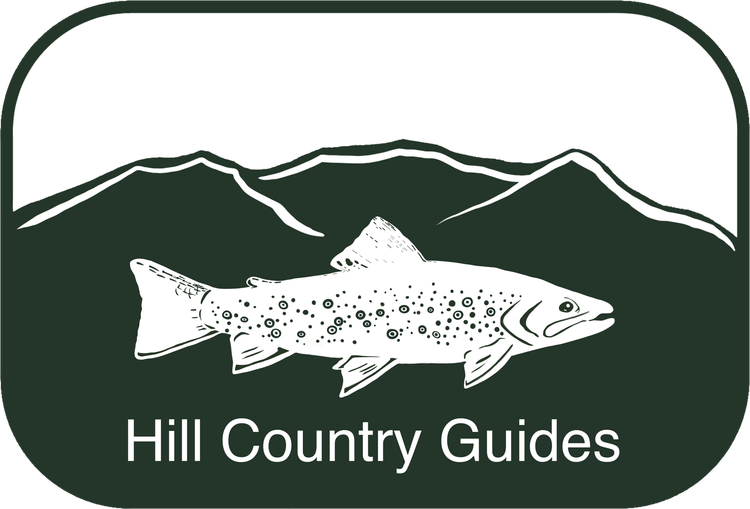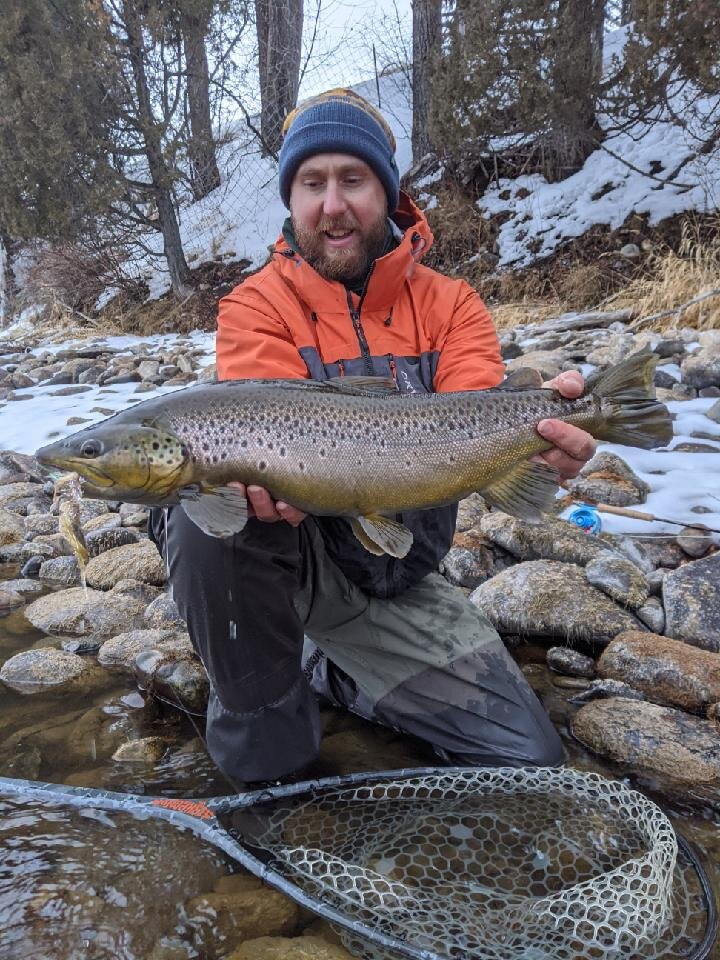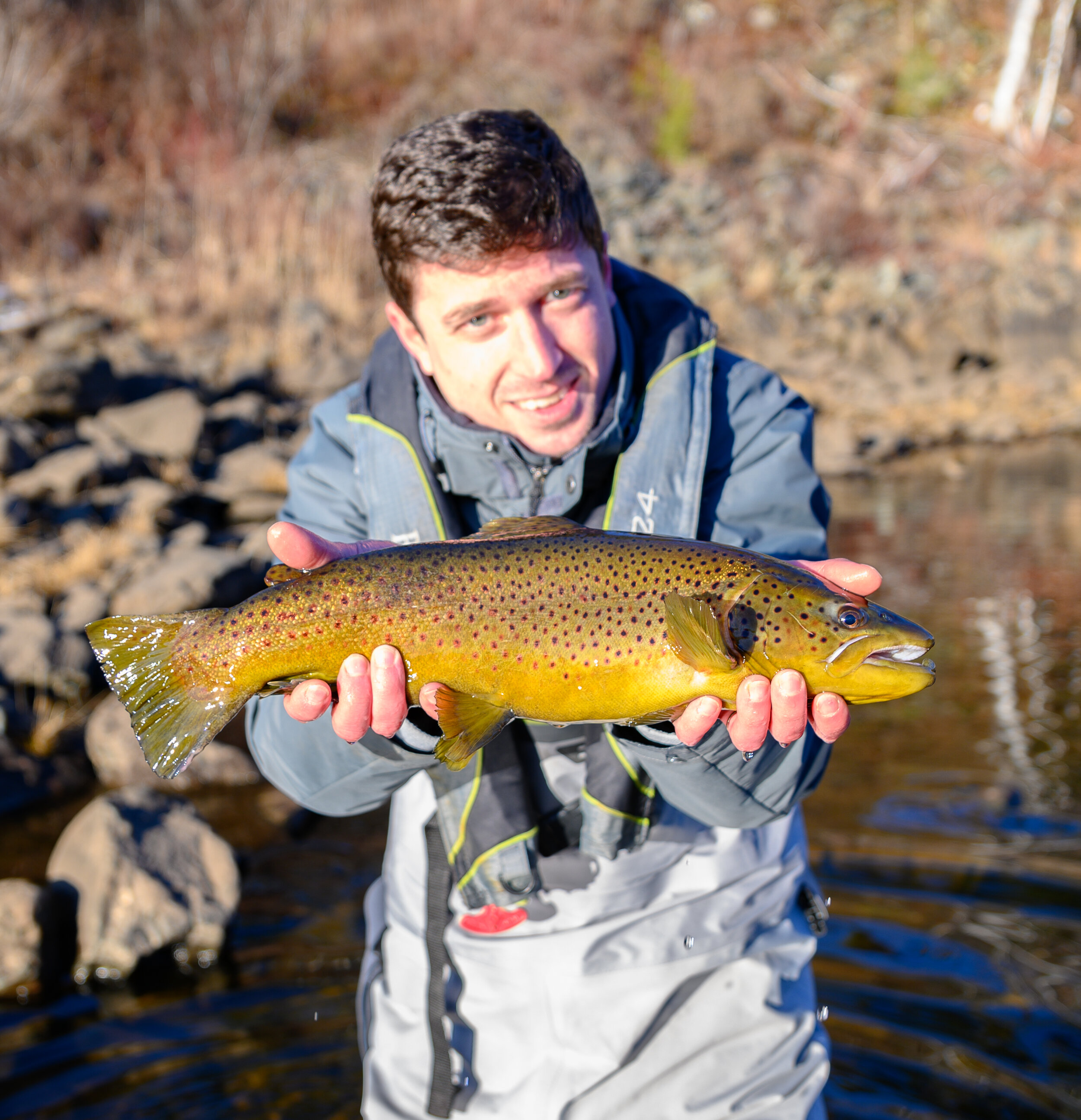Think Sun
I seem to catch most of my fish in the winter when I focus on the water where the sun is shining. This water will change with the sun angle and I have done well to follow the sun around the river. Obviously you can’t play this game on cloudy days, but if the sun does get a chance to peak through, be ready! While warmer days tend to out fish colder winter days. It does seem like you can still do well on colder days if the sun is out. Beware of very warm winter days, especailly later in the winter. Excessive warmth can cuase an influx of snowmelt which will drop water temps and turn the bite off. I prefer air temps between 35 and 45 degrees.
Patience is Key
Patience might be one of the most overstated attributes of a good angler, but there is good reason for that. In winter it is common to go hours without a bite. Not getting bites can have little to do with where or how you are fishing and more to do with the small bite windows that open and close during this dark time of the year. Thus it is key to know where fish hold in the winter and ply smaller stretches of productive water with a variety of flies until you figure out what works. Switching flies can be more important than switching presentations, the key is giving the fish a meal that they are seeing this time of the year. Fish through all hours of the day and you will bump into a bite window or two. It can be very educational to see fish suddenly bite the same fly you have been fishing in the same run after hours of nothing.
Winter Gear
Rods and lines,
In winter I often simplify my gear. I tend to fish 10 foot 4 and 5 weights as the majority of my fishing is done with tightline and indicator nymphing techniques. These rods also work well to jig streamers and I can dry fly fish with them if need be. I typically carry two spools of line, one cortland level competition nymphing line and one Orvis Hydros textured trout line. If I’m fishing from a boat I’ll set up two rods, one with a jig style streamer on the level line and an indicator nymph rig on the Hydros line. I prefer a long right angle nymph rig for my indicator rig. This allows me to switch between jigging streamers and nymphing until I figure out exactly what the fish want.
Flies:
You can slim down your fly selection for winter fishing I typically carry the following:
midge larvae (rootbeer, ruby, zebra, purple) size 16-20
prince nymph jigs size 12-14
Jiggy egg: size 12-14 in yellow, orange, pink
sac fry: Size 12
flashback hares ear nymph size 12-16
lightning bug size 16-18
pheasant tail jig size 12-14
slump buster jig size 6-8
olive leach jig size 6-10
mopfly jig size 6-8 (tied with baby blanket yarn*)
grayfish jig size 4
sculpin jig size 4
*While this is a breif list I often change the color of these patterns to keep fish guessing.
*I tie my mop flies with olive, tan and chartreus baby blanket yarn. This material allows me the versatility to change the lenght of this fly. I’ve also found this material effective for baitfish patterns.
Clothing:
Because I am a skiier I will often wear insulated ski pants or fleece pants under my waders in the winter. You can also wear neoprene waders but I like the versatility of adding layers under a brethable wader, and I often find that I stay plenty warm if I layer correctly under my waders.
For boots it is a good idea to invest in a good pair of cleated soles. Walking on ice and snow is common when getting to the water and these soles won’t ice up as easily as felt. I like the heavy duty spiked soles sold by Korkers and I prefer Korkers boots for their versatility ing eneral. As I’m often guiding in and out of a boat it is nice to be able to switch from felt to rubber, to cleated rubber soles.
Winter hat and layers of fleece or wool are key to stay warm. I definitly prefer more layers to heavy layers as I often find the need to shed layers when I am hiking or rowing. A winter hat is great and if you can find one that fits nicely over a ball cap you will have good sun protection and warmth.
Gloves are key and there are many optoins. I prefer neoprene fingerless gloves with a flip mitten both Simms and Orvis sell these. If you are comfortable fishing with full finger gloves a light pair of cross country ski gloves work well. I’ve also seen anglers wear black rubber gloves under their fingerless gloves. Although I have not tried it myself this looks like a great combo. It is a good idea to carry multiple pairs of golves as well as a warm pair of mittons to ensure you can keep your hands warm. There is nothing that kills a day of fishing more than not having dexterity in your digits. For an inexpensive mitton visit your local hardware store and pick up a pair of Axeman mittons they have a durable leather outter layer and warm thinsulate inner. I love the leather for the grip I get when rowing with these mittons.
Provisions:
The number one food item you will bring in the winter is anything hot. Take the time in the morning to temper a few thermoses and fill one with a hot drink and another with hot soup. Bring some extra cups for your friends so they can last as long as you do on the water! In general I like easy to eat items in the winter that don’t force me do de-glove:pre-made wraps, trailmix, beef jerky, snickers bars all fit the bill. Of course you could go all out and bring a propane grill to make a huge meal, for me I’d rather spend time fishing , after all, winter days are short enough as it is.
If you are interested in learning more about winter fly fishing or would like to book a trip feel free to shoot us an email at info@whitemountainflyfishing.com.
Tight lines,
Nate


















